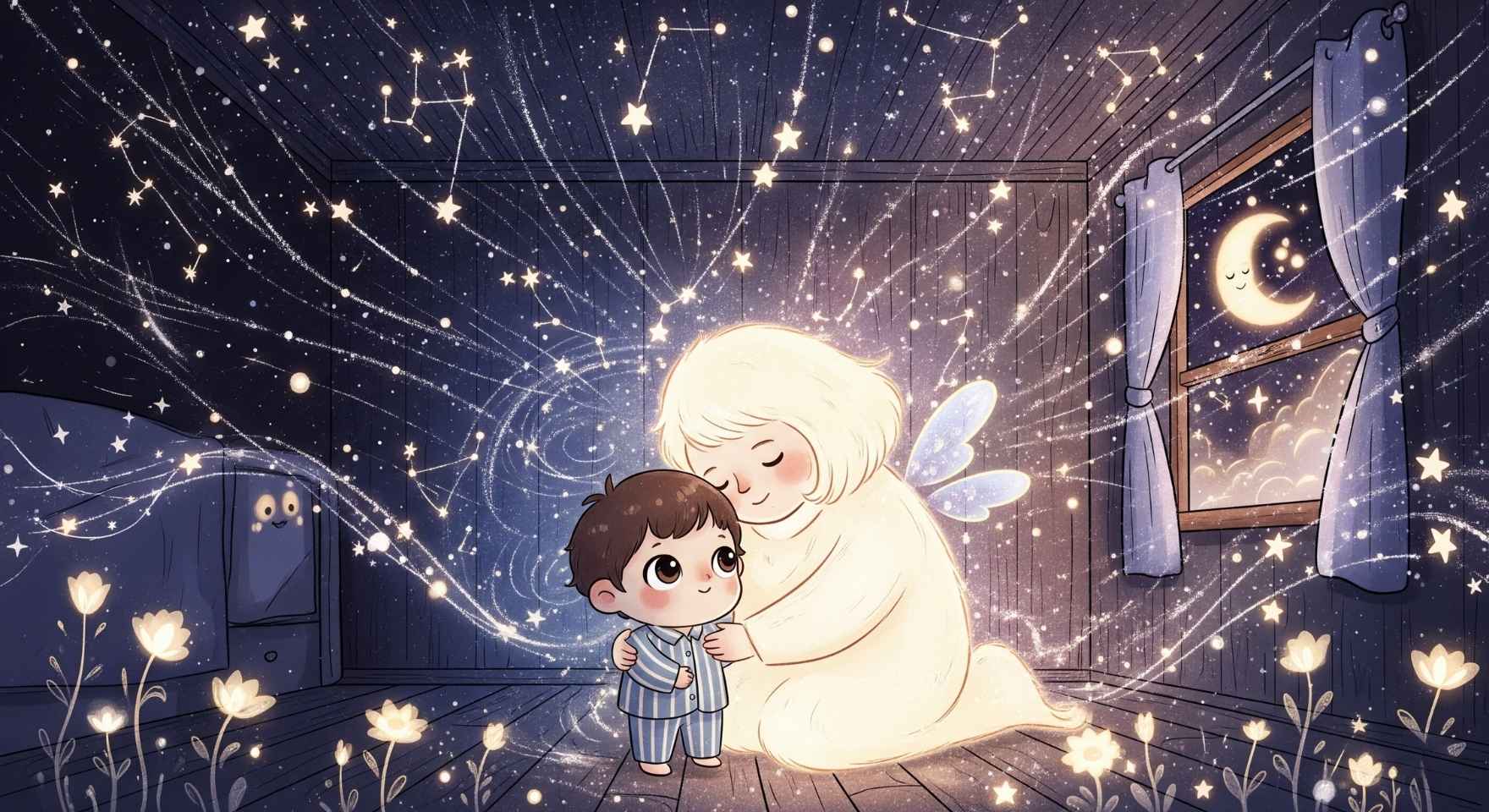Bedtime should feel like a cozy adventure, not a battle against shadows. When those peaceful evenings turn into tearful requests for extra lights or company, it’s easy to feel lost. We get it. You’re not just managing nighttime jitters; you’re nurturing courage in your little one.
Research shows over 70% of kids experience nighttime fears at some point.1 This phase often starts around preschool years, blending imagination with growing awareness. While completely normal, it can leave families exhausted and searching for solutions that stick.
Our guide blends gentle methods with playful creativity to transform bedtime struggles into bonding moments. You’ll discover how to validate feelings without reinforcing anxiety, create comforting routines, and empower your kid with tools that spark confidence. From glow-in-the-dark "monster spray" to bravery-building stories, we’ll help you craft a sleep sanctuary they’ll love.
Key Takeaways
- Nighttime worries are a common developmental stage for young kids.
- Creative solutions work better than logic during emotional moments.
- Consistent routines build feelings of safety over time.
- Empowering kids with "tools" fosters independence.
- Positive associations transform bedrooms into comfort zones.
Understanding Nighttime Fears in Children
When we’ve all seen it: the wide-eyed hesitation at bedtime when familiar spaces suddenly feel mysterious. This shift isn’t random. Between ages 3 and 6, young minds begin grasping complex ideas about safety while their imagination outpaces logic.2 It’s like watching tiny scientists discover gravity while still believing in flying carpets.
Developmental Triggers and Imagination
During these early years, creativity blooms faster than reasoning skill... [truncated]
FAQ
Why do many kids suddenly fear darkness around preschool age?
Between ages 3 and 6, imaginations blossom, which is wonderful for play but can make shadows or quiet rooms feel mysterious. This developmental leap means they’re learning to predict “what if?” scenarios, even if those thoughts aren’t logical yet.
How can I tell if bedtime anxiety needs professional support?
While nighttime worries are common, watch for signs like shaking, meltdowns lasting weeks, or avoiding sleep entirely. If fears disrupt daily life or persist past age 7 or 8, we recommend consulting a pediatrician or child therapist for gentle strategies.
What’s the best way to respond when my little one says monsters are real?
Start by validating feelings (“That sounds scary!”) without reinforcing the myth. Try problem-solving together. Maybe a “monster spray” (water in a spray bottle) or rearranging stuffed animals as “guardians.” Humor and teamwork often disarm imaginary threats.
Do night lights make sleep issues worse long-term?
Not usually! Warm-toned dim lights (avoid blue hues) create a cozy atmosphere without overstimulation. Many families phase them out naturally as confidence grows, like swapping bright lamps for star projectors that feel magical rather than essential.
Can daytime activities really reduce nighttime fears?
Absolutely. Drawing “brave pictures,” reading stories about overcoming challenges, or role-playing with toys helps process emotions. Daylight hours build security that carries into bedtime. Think of it as stocking their courage toolbox.
Should I limit fantasy shows if my kid gets scared easily?
Every child’s sensitivity differs, but opt for calming content 1 to 2 hours before bed. We love shows like Daniel Tiger’s Neighborhood or Bluey that model emotional resilience without intense conflict. Observe reactions. Some thrive on superhero tales, while others need gentler narratives.
How do comfort objects like blankets ease anxiety?
Transitional items act as “safe anchors.” Their familiar smell and texture release calming hormones. Let them pick a special stuffed animal or DIY a “brave bracelet.” These tangible reassurances say, “You’ve got this,” even when you’re not in the room.
Works Cited
-
Muris, P., & Merckelbach, H. (2001). The etiology of childhood specific phobia: A review. Clinical Psychology Review.
Annotation: This academic review notes that prevalence rates of nighttime fears in the general population of children are estimated to be as high as 73%.
https://www.researchgate.net/publication/222533230_The_etiology_of_childhood_specific_phobia_A_review -
Cleveland Clinic. (2023). Fear of the Dark (Nyctophobia) in Children.
Annotation: This guide explains that fear of the dark often starts between ages 3 and 6 as a child's imagination develops and they have difficulty separating fantasy from reality. It also recommends a media curfew before bed.
https://my.clevelandclinic.org/health/diseases/24971-fear-of-the-dark-nyctophobia-in-children -
Smaldone, A., et al. (2007). The impact of sleep on school-aged children's health and cognition. Perspectives in psychiatric care.
Annotation: This study highlights that insufficient sleep in children is associated with negative outcomes, including increased emotional lability (reactivity) and behavioral problems.
https://pubmed.ncbi.nlm.nih.gov/17233803/ -
Child Mind Institute. (n.d.). When to Worry About an Anxious Child.
Annotation: This resource helps parents distinguish between normal fears and more significant anxiety, noting that a phobia involves intense, persistent fear that interferes with daily life and may require professional help.
https://childmind.org/article/when-to-worry-about-an-anxious-child/ -
Johns Hopkins Medicine. (n.d.). Bedtime Fears.
Annotation: This guide advises parents to acknowledge their child's fears instead of dismissing them and suggests using creative outlets like drawing to help children express what is scaring them.
https://www.hopkinsmedicine.org/health/wellness-and-prevention/bedtime-fears -
Sleep Foundation. (2024). How Light Affects Your Sleep.
Annotation: This article explains that warm-colored lights, like red and amber, have less of an impact on melatonin production compared to blue light, making them a better choice for night lights.
https://www.sleepfoundation.org/bedroom-environment/light-and-sleep -
KidsHealth from Nemours. (2022). Comfort Objects.
Annotation: This resource explains that comfort objects (or transitional objects) provide security and help children feel safe, especially during times of stress or separation like bedtime.
https://kidshealth.org/en/parents/comfort-objects.html
